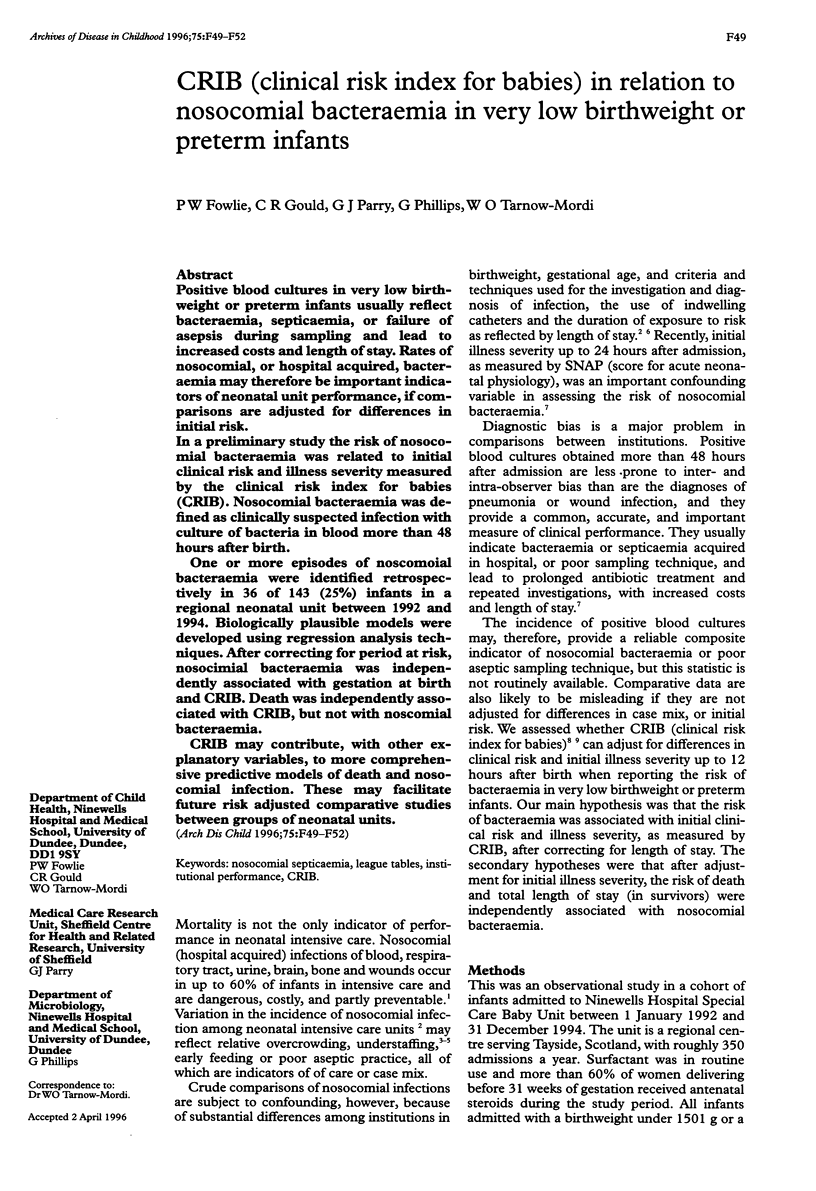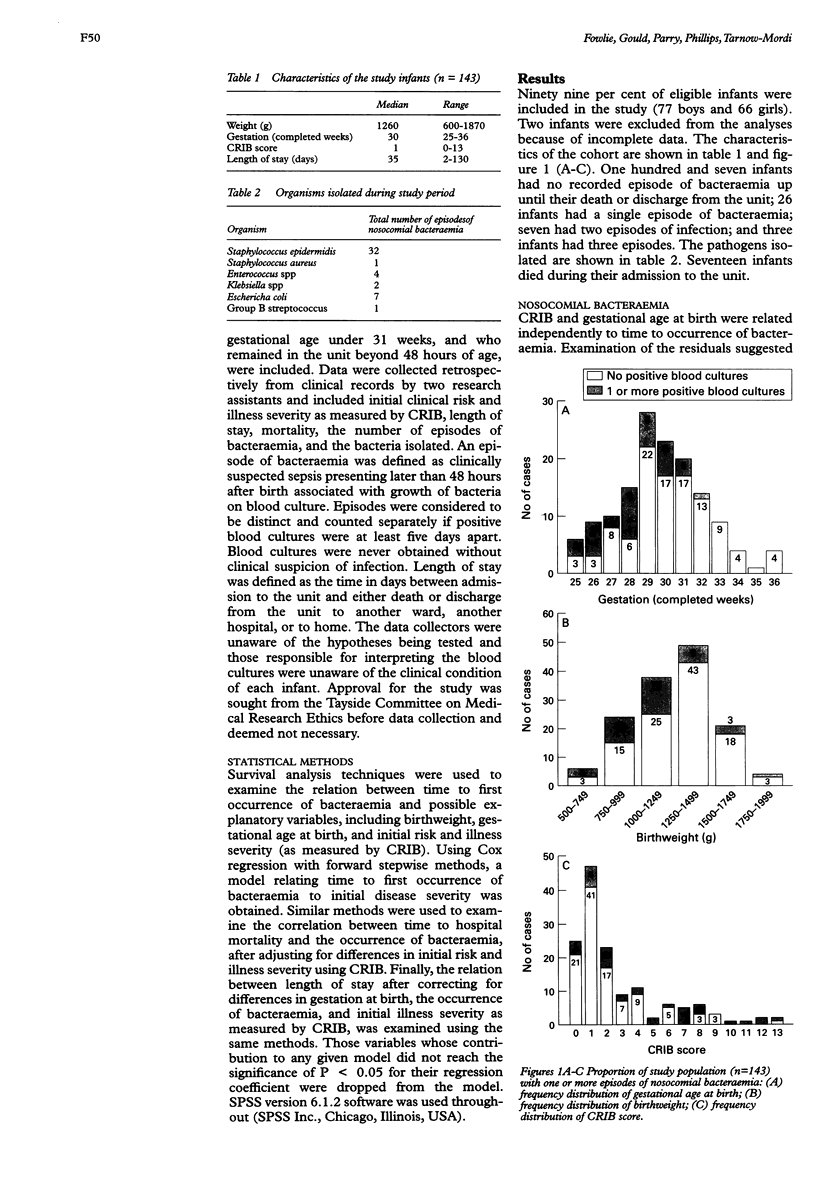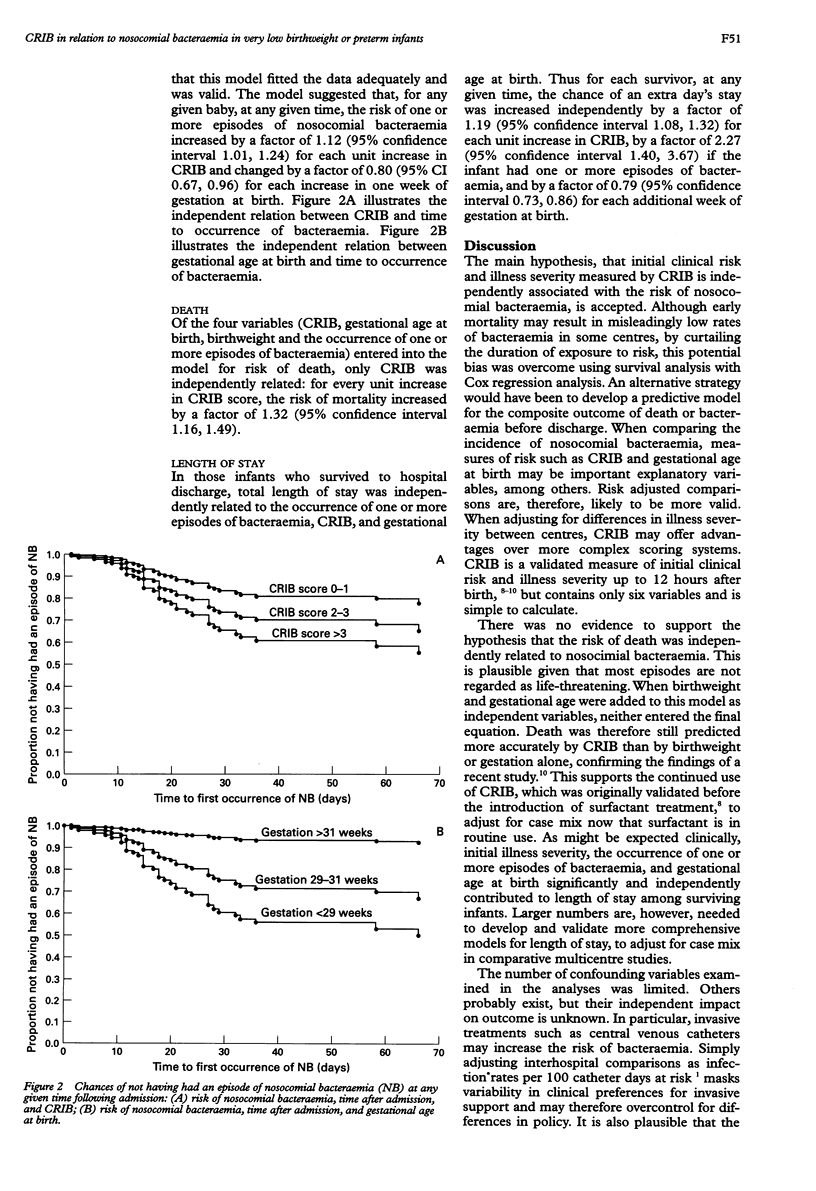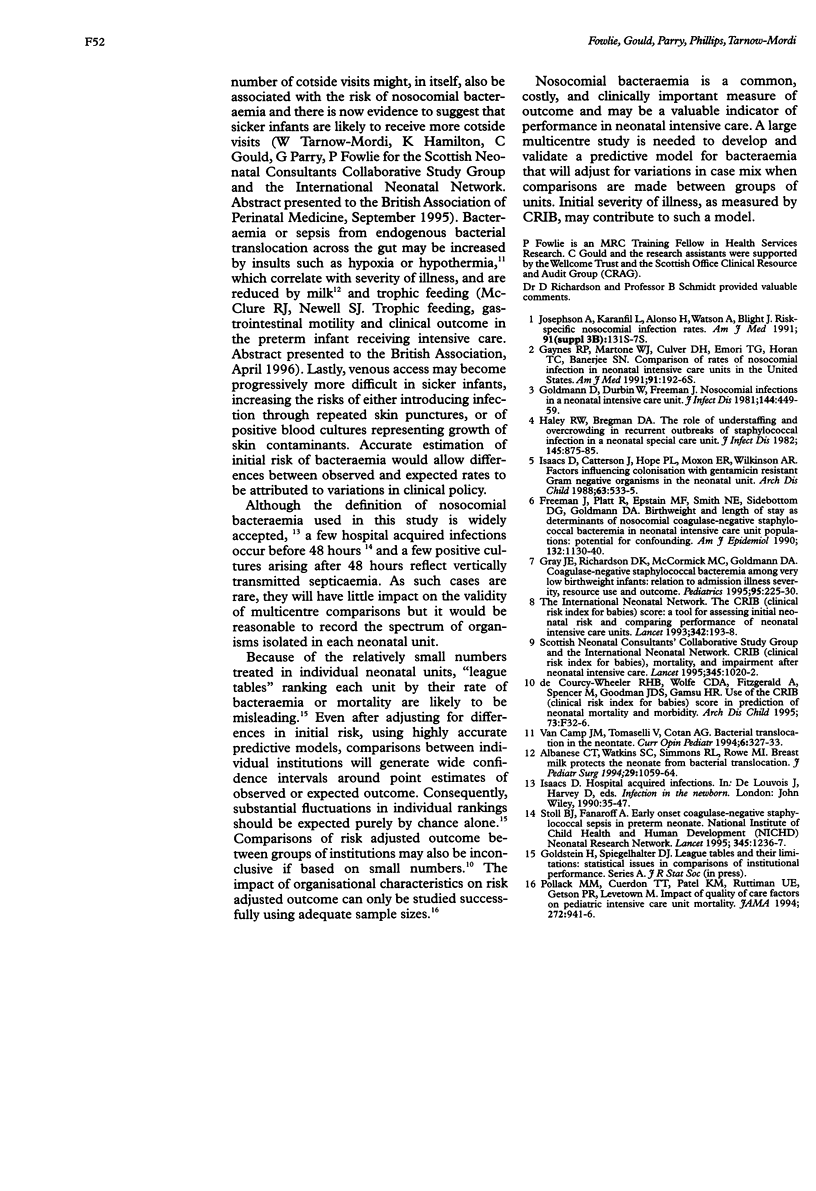Abstract
Positive blood cultures in very low birthweight or preterm infants usually reflect bacteraemia, septicaemia, or failure of asepsis during sampling and lead to increased costs and length of stay. Rates of nosocomial, or hospital acquired, bacteraemia may therefore be important indicators of neonatal unit performance, if comparisons are adjusted for differences in initial risk. In a preliminary study the risk of nosocomial bacteraemia was related to initial clinical risk and illness severity measured by the clinical risk index for babies (CRIB). Nosocomial bacteraemia was defined as clinically suspected infection with culture of bacteria in blood more than 48 hours after birth. One or more episodes of nosocomial bacteraemia were identified retrospectively in 36 of 143 (25%) infants in a regional neonatal unit between 1992 and 1994. Biologically plausible models were developed using regression analysis techniques. After correcting for period at risk, nosocomial bacteraemia was independently associated with gestation at birth and CRIB. Death was independently associated with CRIB, but not with nosocomial bacteraemia. CRIB may contribute, with other explanatory variables, to more comprehensive predictive models of death and nosocomial infection. These may facilitate future risk adjusted comparative studies between groups of neonatal units.
Full text
PDF



Selected References
These references are in PubMed. This may not be the complete list of references from this article.
- Freeman J., Platt R., Epstein M. F., Smith N. E., Sidebottom D. G., Goldmann D. A. Birth weight and length of stay as determinants of nosocomial coagulase-negative staphylococcal bacteremia in neonatal intensive care unit populations: potential for confounding. Am J Epidemiol. 1990 Dec;132(6):1130–1140. doi: 10.1093/oxfordjournals.aje.a115756. [DOI] [PubMed] [Google Scholar]
- Go L. L., Albanese C. T., Watkins S. C., Simmons R. L., Rowe M. I. Breast milk protects the neonate from bacterial translocation. J Pediatr Surg. 1994 Aug;29(8):1059–1064. doi: 10.1016/0022-3468(94)90279-8. [DOI] [PubMed] [Google Scholar]
- Goldmann D. A., Durbin W. A., Jr, Freeman J. Nosocomial infections in a neonatal intensive care unit. J Infect Dis. 1981 Nov;144(5):449–459. doi: 10.1093/infdis/144.5.449. [DOI] [PubMed] [Google Scholar]
- Gray J. E., Richardson D. K., McCormick M. C., Goldmann D. A. Coagulase-negative staphylococcal bacteremia among very low birth weight infants: relation to admission illness severity, resource use, and outcome. Pediatrics. 1995 Feb;95(2):225–230. [PubMed] [Google Scholar]
- Haley R. W., Bregman D. A. The role of understaffing and overcrowding in recurrent outbreaks of staphylococcal infection in a neonatal special-care unit. J Infect Dis. 1982 Jun;145(6):875–885. doi: 10.1093/infdis/145.6.875. [DOI] [PubMed] [Google Scholar]
- Isaacs D., Catterson J., Hope P. L., Moxon E. R., Wilkinson A. R. Factors influencing colonisation with gentamicin resistant gram negative organisms in the neonatal unit. Arch Dis Child. 1988 May;63(5):533–535. doi: 10.1136/adc.63.5.533. [DOI] [PMC free article] [PubMed] [Google Scholar]
- Josephson A., Karanfil L., Alonso H., Watson A., Blight J. Risk-specific nosocomial infection rates. Am J Med. 1991 Sep 16;91(3B):131S–137S. doi: 10.1016/0002-9343(91)90358-5. [DOI] [PubMed] [Google Scholar]
- Stoll B. J., Fanaroff A. Early-onset coagulase-negative staphylococcal sepsis in preterm neonate. National Institute of Child Health and Human Development (NICHD) Neonatal Research Network. Lancet. 1995 May 13;345(8959):1236–1237. doi: 10.1016/s0140-6736(95)92017-x. [DOI] [PubMed] [Google Scholar]
- Van Camp J. M., Tomaselli V., Coran A. G. Bacterial translocation in the neonate. Curr Opin Pediatr. 1994 Jun;6(3):327–333. [PubMed] [Google Scholar]
- de Courcy-Wheeler R. H., Wolfe C. D., Fitzgerald A., Spencer M., Goodman J. D., Gamsu H. R. Use of the CRIB (clinical risk index for babies) score in prediction of neonatal mortality and morbidity. Arch Dis Child Fetal Neonatal Ed. 1995 Jul;73(1):F32–F36. doi: 10.1136/fn.73.1.f32. [DOI] [PMC free article] [PubMed] [Google Scholar]


